Improving Posture: Exercises to Correct Excessive Low Back Curve

Improve Your Posture: How to Correct an Excessive Lower Back Curve
Are you aiming to improve your posture? Correcting an exaggerated curve in your lower back is achievable with targeted exercises.
Experiencing lower back pain? This discomfort often stems from an abnormal arch in your spine, known as a larger-than-normal lordotic curve.
This guide unveils essential exercises designed to rectify an increased curve in your lower back posture. After mastering the foundational routines, you’ll find advanced exercises to further enhance your posture.
See Also: Advanced Posture Exercises For Your Rounde Upper Back
Understanding Posture: Addressing Hyperlordosis
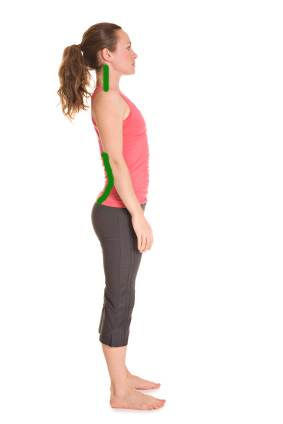
The natural curves in your lower back and neck, known as lordosis, play a crucial role in your overall posture. Normal lordosis is common and healthy.
However, the internet is rife with misinformation regarding posture correction. As a practising chiropractor, my goal is to provide you with accurate and reliable information to navigate posture improvements effectively.
Excessive curvature, or hyperlordosis, refers to an overpronounced curve in the lower back. “Hyper” indicates an excess, much like the term “hyperactive.” Conversely, “hypo” denotes a deficiency, indicating less curvature than normal.
It’s possible to exhibit hyperlordotic posture without experiencing pain. Nevertheless, addressing this condition early is vital to reduce the risk of developing osteoarthritis in the joints and discs of your lower spine.
See Also: 4 Upper Back Exercises To Improve Posture
Correcting Hyperlordosis: Enhancing Appearance and Reducing Risk
Proactively adjusting a hyperlordotic posture not only mitigates health risks but can also refine your silhouette. Through specific exercises, we can realign your pelvis, diminishing the appearance of lordosis without altering your body’s natural shape.
Causes of Hyperlordosis Include:
Tight Muscles:
- Erector spinae muscles along the spine.
- The hip flexor muscle is known as the psoas.
Weak Muscles:
- The gluteus maximus shapes your buttocks.
- Abdominal muscles, particularly the rectus abdominis or “six-pack” muscles, remain concealed for many under a layer of fat.
Hyperlordosis results from an imbalance between overly tight muscles pulling in one direction and weak muscles failing to compensate, exacerbating the spinal curve.
Correcting Your Posture: Balancing Muscle Strength
To amend your posture, begin by stretching the tight muscles before strengthening the weaker ones. This balanced approach is key to correcting an excessive lower back curve and improving your overall posture.
A: Arch Your Lower Back Like The Cat Pose in Yoga – Stretch your low back erector spinae (low back muscles).
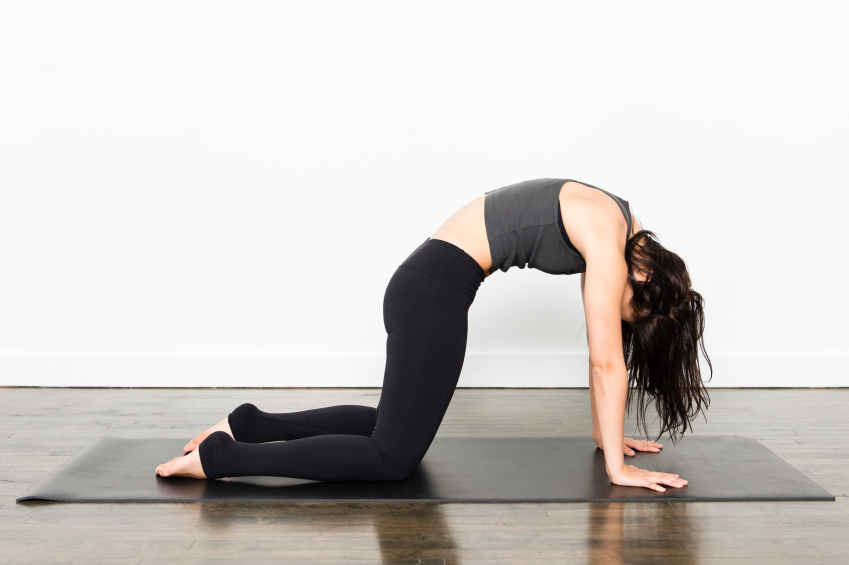
- Get on all fours with your hands under your shoulders, your knees under your hips.
- Arch your upper back and lower back like a cat does when it’s scared.
- Hold for 30 seconds – do 3 sets.
- If you have a disc problem, or it hurts to arch and flex your back, this exercise is not for you.
A: Child Pose: Second stretch for your low back erector spinae (low back muscles).
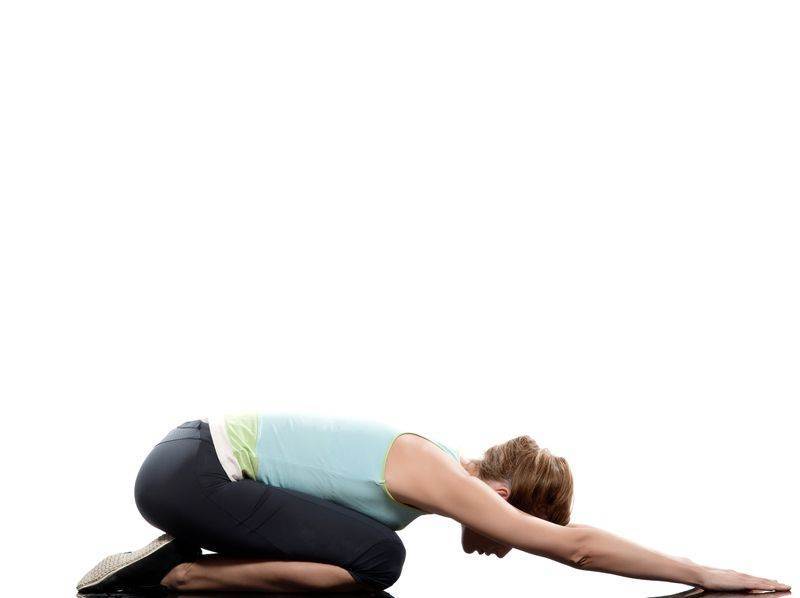
- Get on your hands and knees.
- Sit back onto your heels with your arms reaching out as far as they will go.
- Your head is looking down – neck down.
- Hold for 30 seconds – do 3 sets.
A: Lunge Pose: You need to stretch the hip flexor muscles (psoas muscles)
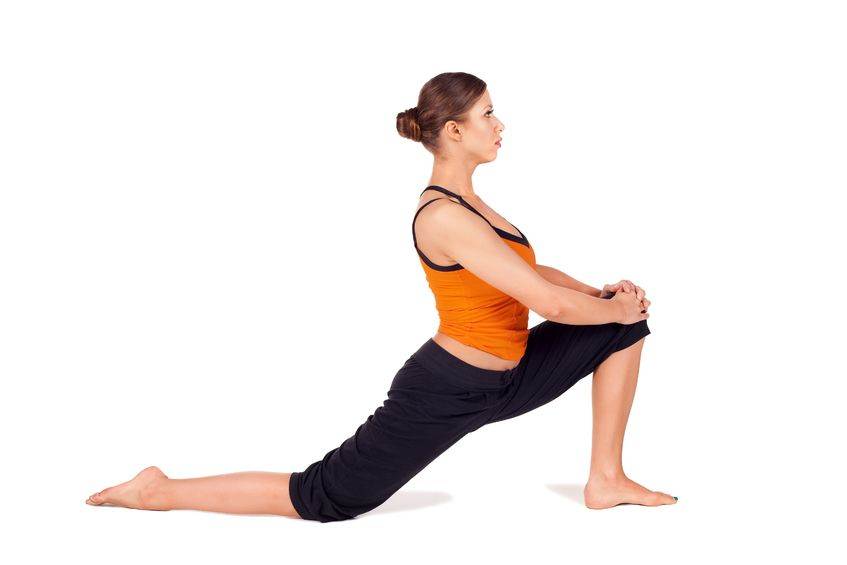
- Get down on your knees.
- Put one leg forward with the knee bent to 90 degrees.
- The other leg is back with the knee very slightly bent resting on the floor.
- You should feel the stretch in the front part of your hip.
- Hold for 30 seconds and do 3 sets.
Second, strengthen your gluteus maximus (your butt-shaping muscle) and abs (your rectus abdominis muscles or six-pack muscles)
I will give you two exercises to strengthen your gluteus maximus. The squat and the single-leg squat.
B: The Chair Squat To Strengthen Your Gluteus Maximus
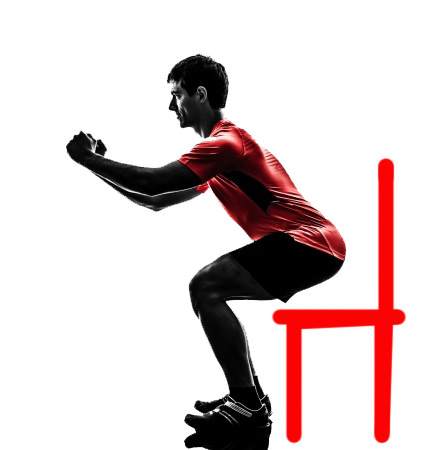
- Stand with your back to the chair.
- Your feet should be shoulder width apart with your feet turned out slightly
- Make sure to not arch your lower back when lowering yourself down to the chair.
- Touch the chair and come right back up 10 – do 3 sets.
B: Single Leg Squat To Improve Your Posture. When you can do three sets of chair squats easily, try single-leg squats.
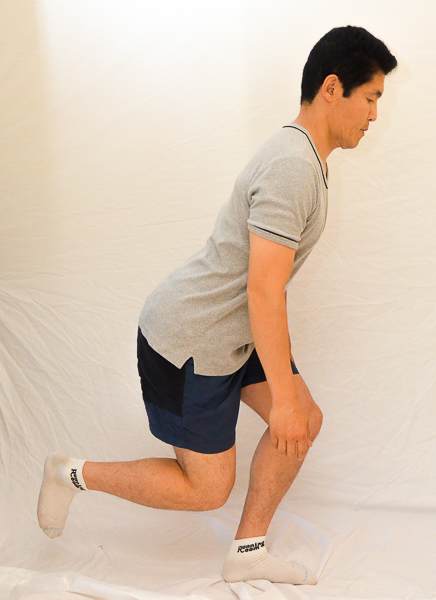
- Always stand near a wall so, you can support yourself if you lose your balance.
- Stand on one leg.
- Stick out your butt as much as you can while bringing your other leg back, dragging it on the floor to keep balance.
- Go as far as you can with the back leg.
- Don’t let your knee go forward past the big toe
- Do 3 sets of 10.
Strengthen Your Abs To Help Your Posture
B: Front Planks strengthen your abs without putting dangerous pressure on your discs like crunches and sit-ups do.
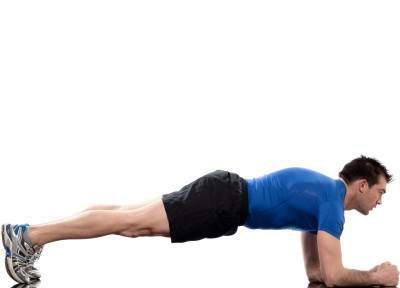
- Lie face down.
- Toes together and your arms shoulder width apart.
- Hold this position without raising your butt too high
- Your body should form a straight line. Look in the mirror.
- Hold for up to 1 minute at a time. – do the exercise 3 times.
B: Advanced Abs Strengthening To Help Your Posture

- Get a basketball or medicine ball.
- Get in the front plank position.
- Balance with your forearms on your medicine ball/basketball.
- Pull your arms in toward you while balancing on the ball.
Feel free to share your questions, thoughts and experiences in the comments below, and don’t forget to connect with us on Facebook for more updates and tips on improving your shoulder health. We’d love to hear your opinions on who you consider the best Toronto chiropractor.





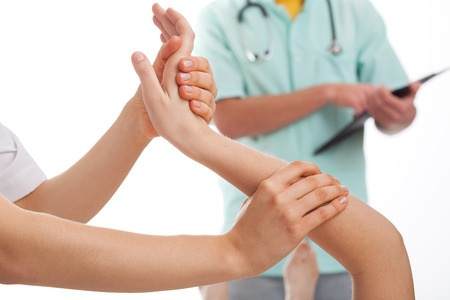
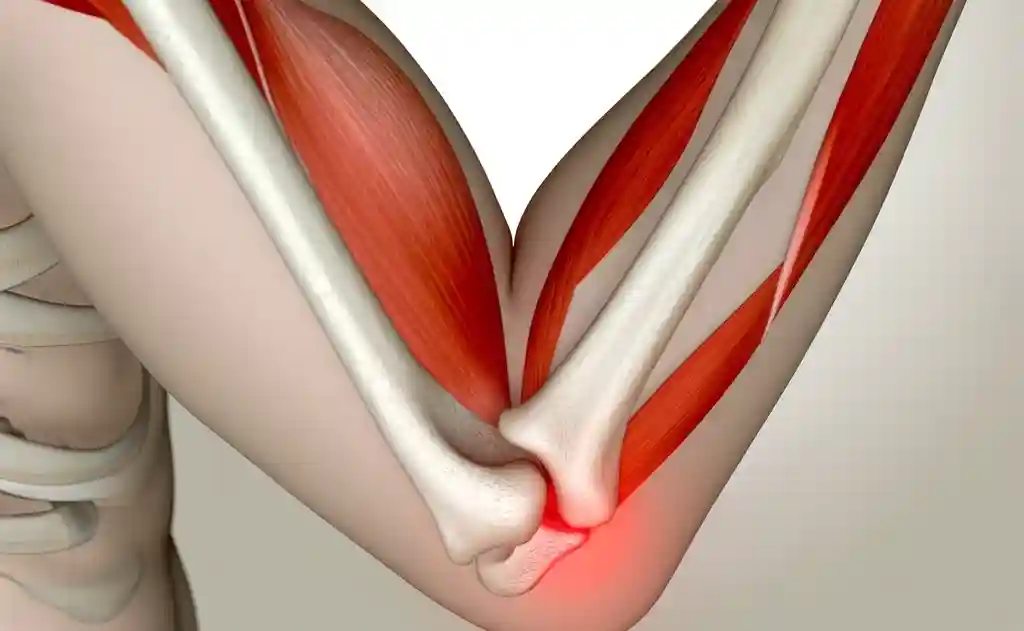
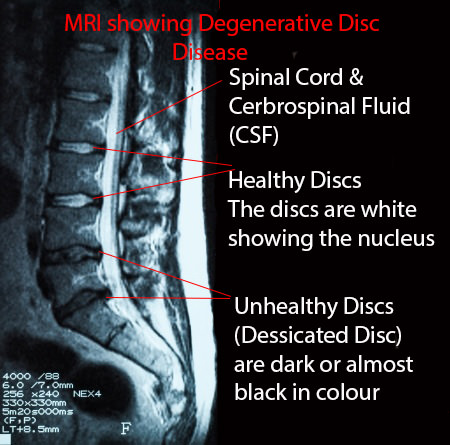
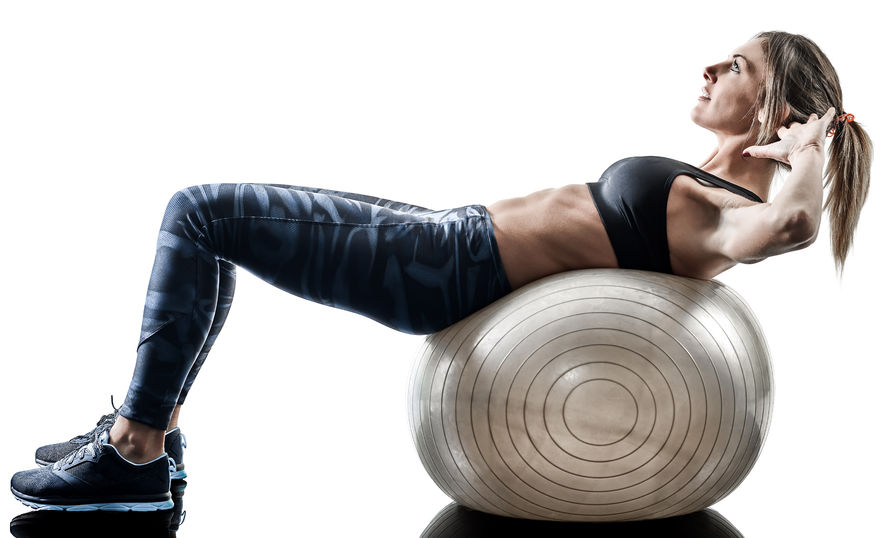
Yeah, me too. I’ve had bad posture since I was a kid. What do you think about these exercises where you lay on your back and raise your legs a bit to strengthen your lower abs? Does that help?
Author
Thanks for your question Harry. They help but they are also good to put your disc out. In other words good in one way but bad in another. I wouldn’t recommend them. I would do planks and side planks instead.
Hope that helps your posture Harry.
Thanks for your advice. I’ll try the side planks as well.
Author
You are welcome Harry.
Pingback: Correct Posture When Lifting Weights
Hi Dr. Ken,
There is a complete mountain of comments here. Was going to try to read through them and see if you covered my question but got overwhelmed.
Quick question, it seems other people seem to think pelvic thrusts work to correct hyperlordosis. What are your views on this?
Thanks,
Harry
Author
Thanks for your question Harry. Pelvic tilts will help hyperlordosis whereas pelvic thrusts do the opposite. Pelvic tilts decrease the curve by flattening the back but don’t do anything to address the muscle imbalance. They only put you in the right position. Like making crooked tires straight when the car is on the hoist unless the alignment is corrected you are only making a visual change with nothing to hold it there. Here is a picture. https://www.google.ca/imgres?imgurl=http://img.webmd.com/dtmcms/live/webmd/consumer_assets/site_images/media/medical/hw/hwkb17_046.jpg&imgrefurl=http://www.webmd.com/fitness-exercise/pelvic-tilt-exercise&h=300&w=460&tbnid=yrK6a7KseHS7AM:&docid=utQFsnJFhvdK1M&ei=PvqLVsO6O8GsesWEtugL&tbm=isch&ved=0ahUKEwjD0c2ZlpPKAhVBlh4KHUWCDb0QMwgpKA0wDQ
Pelvic thrusts are this which you shouldn’t do. https://www.google.ca/imgres?imgurl=http://www.newhealthadvisor.com/images/1HT02568/pelvic_tilt_600x400.jpg&imgrefurl=http://www.newhealthadvisor.com/Exercises-for-Diastasis-Recti.html&h=400&w=600&tbnid=is_Rqcg2oA4yXM:&docid=al2jKA1Ly90O4M&ei=PvqLVsO6O8GsesWEtugL&tbm=isch&ved=0ahUKEwjD0c2ZlpPKAhVBlh4KHUWCDb0QMwggKAQwBA
Hope that helps your understanding.
Thanks for the quick response Dr. Ken,
Well crud to put it lightly. There are a lot of sites on the internet that say you should do pelvic thrusts. Can you explain why you shouldn’t do these?
Thanks,
Harry
Author
Thanks for your question Harry. It increases the curve when you do them. Simple. When you go do the thrusts if you have hyperlordosis people tend to go too far. That increases the curve. You are trying to correct your curve.
Lots of sites say too much of a curve in the lower back is lordosis. That’s also not correct. It’s called hyperlordosis.
Hope that helps.
I’m glad I asked. I will discontinue them as of today. I kind of thought they didn’t feel right.
Thank you
Author
Hope your posture gets better.
So I’m 13, and I’ve always wondered why in more recent years my body has protruded that way at my stomach and my butt. It looks weird from my side profile when I’m wearing a T-shirt and shorts.
So I’ve tried the test, and it seems that when I’m lying flat on the floor I can actually fit an about an ARM through the whole between my back in the floor.
I’m by no means overweight; I’m about 162 cm and guessing 50-55 kg. Mine just comes from bad posture as I always slouch whether I stand or sit.
So If I do these exercises properly every single day, is there an approximate time it’ll get a little better?
Also, APPARENTLY many models have this and it’s ‘pretty.’ Is that true?
I forgot to add, but I don’t experience any back pain. When I straighten now though, I do feel some discomfort, but I think that may be because I’m not used to the correct position.
And once again, I promise this isn’t some ‘self-conscious’ thing that comes with teenage years or something. When I stand straight against a wall or lie straight against the floor, I can definitely fit an arm through it.
It’s only because recently I decided it was time to stop slouching and then when I put my shoulders up straight I was horrified to see the curve of my back into my butt.
Thanks so much, and very sorry for the long queries.
Author
Glad it’s not self conscious but since you aren’t in pain it might be good just to accept things the way they are.
Hope that helps.
Author
Thanks for your question Olivia. Beauty or “pretty” is a matter of opinion and different for everybody. Gymnasts and dancers and models often have this. Some people like the look as it pushes out their chest.
To answer your question it does sound like hyperlordosis. It’s not a problem unless you think it is as long as it is not giving you pain. If it isn’t giving you pain and you are happy with the way you look then I would leave it alone. I don’t think you are happy though. I would encourage you to accept things the way they are. If you still aren’t happy after talking about it with with some guidance from some wise women in your life then I would do the exercises.
If you are going to do the exercises it requires a big commitment. Everyday for at least a few months at the least. If you can handle that and you’ve talked to an elder and made a decision to start then by all means do the exercises.
Hope that helps.
Hi, I just read your article and I’m probably going to be starting these exercises today. I’m twelve and I think I have hyper lordosis, but fortunately it isn’t too obvious. Before I start doing the routine, can you tell me if there are any habits that will worsen hyper lordosis? For example, does sitting without having any pillow or surface behind your back to support you make it worse? (I remember my dad telling me this, just wondering.)
Thank you so much for this article. I just don’t want any of my current habits to interfere with my recovery…thanks again 🙂
Author
Thanks for your question Saylenn. You should ask your dad if you can do these exercises. ( I have to say this ). In your case it is better to slouch and not put a support behind your lower back. However you may not have hyperlordosis. You may be too self conscious. If that is the case then sitting up straight with a pillow would be helpful.
Hope that helps.
Hi Dr Ken. I was born with scoliosis which then fixed itself and became lordosis. Lately though my back has been in some pain so i have decided to start using your website. I am hoping the Cat Pose helps me. I am sure it will if i do it properly. Thanks in advance 🙂
Author
Thanks for your comment Sophie. IF you do all the exercises everyday then the exercises should help you improve your posture.
Hope that helps your posture.
Hi doctor,
Background info: turning 19 in a week, 5’6 tall, 128 pounds.
– I have hyperlordios in my lower back
– My right shoulder is slightly higher then my left shoulder
– One of my legs feel longer than the other
With this said I wanted to know which exercises I should do to fix each one the listed problems. Attached to the exercises would you be able to send me links to diagrams for each exercise suggested? Also could I strentgh train (trying too gain weight and muscle mass) and do these exercises simultaneously without any negative affect? Lastly would I see an increase in height after doing the exercises and seeing results? (If possible to gain height after; I am not expecting a vast change just wondering if there would be an inch or two difference)
Thanks
Author
Thanks for your question Sunny. To fix the hyperlordosis do the exercises here in this article. As for the shoulders the leg length correction will usually help the shoulder. You should go see a chiropractor if you want the short leg fixed provided that the short leg is due to a functional problem meaning the muscles are pulling the leg up due to an imbalance. If your leg is actually short you need a heel lift.
Hope that helps your posture.
Hi Dr. Ken, I am 32 now and I have this condition. I just tried this and it felt really good on my back. At my age, is it too late for me to correct this? How long will it take before I notice improvement? Thanks!
Author
Thanks for your question Baron. It’ not too late you can improve your posture but probably not get perfect posture. Just try the exercises everyday and see how you feel in a month and look at yourself in the mirror.
You will probably like what you see.
Hope that helps correct your posture.
Author
Thanks for your question Baron. It’s never too late to help the problem although I don’t think you will get to perfection things can always be improved.
Hope that helps your posture.
Hello doctor, your article is very informative thank you.. I want to ask you something about myself.. Actually my lower back and neck both curve forward but the tilt is more than the usual.. I ‘ve been to a doctor and he told me that this is a normal posture to have but mine is exsessive so I have to be careful with extra weight for my back. I am doing weight lifting now and sometimes, especially after doing abs, I feel lower back pain.
What I want to ask you is if the exercises you suggest can fix the problem for the persons who have both lower back and neck lean forward but the tilt is more than normal for both.
Author
Thanks for your question Nicholas. First don’t do sit-ups or crunches and stick with planks and side planks. You can get your abs really strong but you avoid all the problems of aggravating your lower back.
Hope that helps your posture and lower back pain.
hi Dr…i want to ask about my husband…hes 30 yrs of age ,he started having pain in low back at sacral region ….actually it increases due to his long driving late till night from morning …recent xray shows mild degeneration at L5 anS1 vertebrae and we found straightning of of his lumbar curve due to spasm of back muscle…can you tell me please exercises for him
Author
Thanks for your question Aqsa. Your husband has the opposite problem of the one described in this article. He could try these exercises: https://www.bodiempowerment.com/herniated-disc-part-2-the-best-exercises-for-your-herniated-disc/
Like any exercises they can make you worse. They should be supervised by a health professional.
Hope that helps his lower back pain.
Hi doctr..i m 21 yrs old and weigh 80 kgs..i hav a bad posture and planning to do the above mentiond exercises..but the problem is, i usually get back pain when i do squats..is it natural to hav pain while squats r is it occurng due to my posture..it wud b helpful if u suggest me wat to do next?
Author
Thanks for your question Divaker. If you have Hyperlordosis you are more likely to get pain during squats from compression of the vertebrae. Most people have the opposite problem and damage their disc when their spine straightens out.
Try the exercises in the article to see how they do for you. Remember any exercises especially when you already have pain can make you worse.
Hope that helps your posture and pain.
Hi, I’ve had hyperlordosis for as long as I can remember and I’ve had it x-rayed to confirm. I find that after a lot of standing, walking or bending I can be in a lot of pain (this is what I do at work for 7.5 hours) I was told it was because a nerve is getting trapped between the discs, unfortunately this has caused other problems which was how it was diagnosed. I do a lot of exercise and found I that at one point my back was getting better but had to stop so I think it’s now getting worse. I like your choice of exercises, I currently do sit ups, crunches, leg raises and plank (I find plank can be quite painful on my back is this normal?) and have just started squats. I personally think my back muscles are the issue cause I have very strong abs, I’m looking forward to trying these exercises even though I might not be able to do them everyday and was wondering if there were any others that would be good. Is running a good idea as I have done a 5k jog and found it amazing but found it can also hurt.
Thank you for your article nice to see a professional putting advice online 🙂
Keep up the amazing work
Author
Thanks for your question Siobhan. You should try these exercises first before doing any others. Also spinning or cycling is a good sport for you not running.
Hope that helps your posture.
I have a question can hyperlordosis be cured and by that I mean will my back curve out and look normal again and with normal posture
Author
Thanks or your question Constantine. Yes hyperlordosis can be helped but “cured” is a strong word. I wouldn’t count on a cure.
If you do the exercises hyperlordosis can be helped. Like any exercise it can give you pain so should be supervised.
Hope that helps your hyperlordosis.
Hey Dr. Ken,
I remember having this hyper-lordosis and kyphosis at least since I was in elementary school. I have had continual neck and lower back pain. I fit all of the symptoms of what the internet calls “hollow back” and what you have described in your article. My questions are why this problem developed, how common it is, and if it can really be fixed? Will my body be forever wanting to go back to this position, continually having to do exercises?
Anyway, I recently have truly noticed it and been doing research on it, and have decided to finally do something about it. Where do I start? Should I go see someone? Will just these exercises really be enough? Do you think I also need help correcting my posture and getting some type of chiropractor help or physical therapy?
I know I asked a lot of questions, but any advice you can give me will really help so much. Thanks so much in advance for your help! I want to kick this thing.
Author
Thanks for your question Gabriel. This is a developmental problem usually associated with muscle imbalance that usually stems from genetics. It’s pretty common as throughout the world but more common with women or girls. Also dancers and gymnastics also do a lot of extensions so they tend to have a hollow back as they put themselves in that position repetitively. If you do the exercises everyday for 3 months to a year depending on how bad the problem is it can be helped. Then you can just maintain the posture by doing them 3 times a week but some people will require the exercises everyday.
Just try the exercises first for 3 months everyday. If you aren’t getting anywhere remember that your posture at home and work are also very important. If you get frustrated you should see a chiropractor as they have more experience with posture from my point of view. If work with 6 physiotherapists and a chiropractor.
Hope that helps your posture.
Hi doctor,
I am planning to go to a hospital and meet a doctor regarding my lumbar lordosis. Which type of doctor should I consult (chiropractor or physiotherapist or back painmanagement doctor).(actually I don’t have any back pain at all) my posture looks so ugly with my excess curvature which makes my back look extra large.
Author
Thanks for your question John. I chiropractor is the best person for the job John. Hope that helps your posture. Some physiotherapists especially those trained in DNS are also good at taking of posture.
Hello Mr. Ken,
Thank you very much for sharing with this article.
I am 29 years old men (185 cm/84kg) with hyperlordosis and slight (maybe 2cm) abdominal separation (Diastasis Recti).
I have visited several chiropractors, and basically I was given very similar advise as you give.
But after months of doing doing stretches and front plank, my abdominal separation and hyperlordosis worsened.
I have visited a doctor and he told me to never do planks again, since when I do them, my abdominal muscles widens the gap between them and it makes everything worse. When I look in the mirror while doing planks, I can see he is right, my stomach is just hanging out as my muscles are contracted.
My question is, what should I do, when I can not do planks or any other abs exercise?
Thank you very much for all the great information you provide via your web site.
Hi,
I am in my mid 50s and have always had a super arch in my back. My PT guy says that was part of the reason I have pain and even some numbness on the right side of my right thigh. The minor numbness came over two years ago after my back “went out” while lifting and hanging a heavy hay net, followed by a day of shoveling snow. That event included pain around the whole side of the hip and groin. With the help of occasional PT and daily exercises I am back to my normal daily routine. But the therapist recommended that I don’t do stretches that arch my back such as ‘downward dog’. I believe him because I have felt my thigh start to tingle while doing certain exercises – so I don’t do those…..
I realize that I’ve had an achy back most of my life and always come up with a reason, bed too soft, lifted a lot of hay, shoveled a lot of dirt, you name it. I can feel a difference in the muscles on the right side of my lower back, the large knot on that side even intimidates my massage therapist. (There is a matching knot in my neck, same side.)
My question is this, after 50 years will I be able to improve that curve in my spine? I can see how it would help a teenager, whose body is still molding, or even a person in their 20s, but bones this old and set?
And how does one stretch the front of their hip without arching their back?
I hope you’ll send a response to my email because I may not remember to check this web page.
Thanks so much!
Author
Thanks for your question Gina. Yes you can still improve you posture as it’s not molding but more of correcting an imbalance between muscles and stabilization exercises to help the problem.
You can stretch the psoas and iliacus muscle like in the picture http://sportinjuriesandwellnessottawa.blogspot.ca/2009/12/low-back-pain-while-runninga-real-pain.html
Hope that helps your posture.
Hello Dr. Ken,
I’m recovering from a disc herniation and have been researching what i can do to rehab and prevent this injury and I came across your articles. I’m very active, mid-30s, and started parkour and gymnastic tumbling 3 years ago. I want to continue doing the activities I love. Ive read that exercises like the L-sit and hanging leg raises or stretches like bending forward and touching your toes can cause disc herniations. However, those exercises are important for tumbling/parkour. Will doing back extension exercises and stretches – cobra pose, back bridges, cat-cows, etc – counter the potential negative consequence of L-sits and leg raises? Are they safe if you do both or should i stop doing them altogether?
Author
Thanks for your question Roozbeh. The first thing to keep in mind is that I haven’t examined you. If you are recovering from a disc herniation it is better not to do the exercises as yes they will cause the same problem. When you have recovered doing both exercises can counter the effect of the other but keep in mind that sitting which most people do for their jobs also will put your disc out.
Also keep in mind you probably will not do enough to counter act the negative effects. That is the tendency for most people. You will have to work pretty hard to counter act all the negative effects.
Hope that helps your disc herniation.
Hi Dr. Nakamura,
First of all, thank you so much for sharing these techniques! 3 weeks ago, I started feeling persistent pain in my lower back after a workout session where I arched my back (slightly arched back with light weights). I didn’t think too much of it but it has been annoying for the past 3 weeks.
The pain – it does not “constantly hurt”. The pain only comes when I arch my back just a little bit (imagine standing up, placing your hands on your hips and arching your back to stretch). As you can imagine, this happens a lot throughout the day not to mention sleeping on a bed at night and your back is naturally arched just a little lying down.
I have been doing your exercises for a week Dr. Nakamura and it has been helping! I am scheduled to see an Orthopedic doctor next week to have it checked. My question to you is what other advice might you have for someone like me? I understand X-ray and MRIs are rarely useful for diagnosing back problems so how will I understand why the pain is occuring?
Sorry to bother you doctor, thank you so much in advance!
Best,
Jeff
Author
Thanks for your question Jeff. Sorry for the tardiness I was on vacation. An orthopedic surgeon won’t do surgery on you for this problem if it’s portural so they can’t help you. Only therapy or therapy and exercises will help.
I suggest that you get in the habit of having good posture with less of an arch in your case. For example you can stand while holding your belly and pushing in very lightly. This is usually enough to change your posture to take the pressure off the lower back.
Hope that helps your exaggerated arch in your lower back.
Hey Dr. Thanks for this article, back when I was a young kid, and around 5’4″, I weighed near to 280. I was heavy, and a lot of it was in the belly. My parents didn’t help they got me soda everyday. And being that heavy caused me to stand leaning back, a lot. To keep a good balance. Then I decided to kick the soda, and I dropped 50lbs in just a few months. And continued to lose weight till I hit 200. I’ve had a bad arch in my back since. I’m hoping this will fix me up!
Author
Thanks for your comment Dragonmaster. I think that the exercises should help you get better. Not perfection but better.
Hope the posture exercises helps.
Actually, do you have any tips for wrist exercises. I do a lot of mediaeval sword fighting stuff, and it gets really tough on the wrist, and elbows.
Author
Thanks for your question Andrew. I don’t have any wrist exercises for you but I am sure you can find many online. When I write about the wrist I will let you know.
Good luck with your wrist.